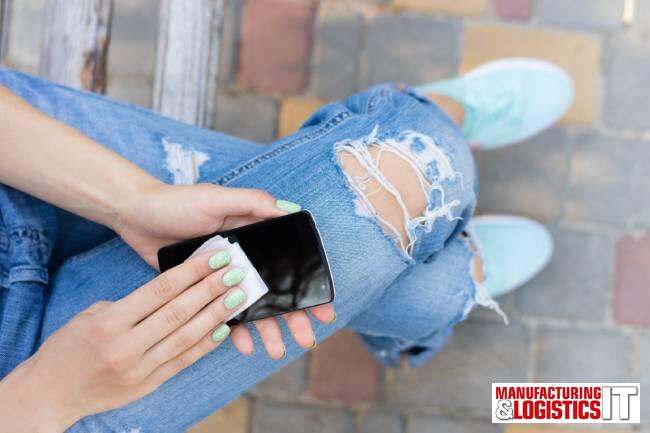In recent times, there has been a greater focus on hygiene in the workplace, likely spurred on by the COVID pandemic. While some germs are completely harmless, others can cause unpleasant illnesses. The chances of a germ surviving largely depends on the type of species, the surface where it is present, and other factors such as ambient temperature or solar radiation.
Door handles and railings are perfect breeding grounds and vectors for germs, but of all the types of surfaces, our hands are the reason for high transmission rates. By comparison, a telephone keypad is actually quite harmless, isn’t it?
Continual contact
As early as 2007, a study by the University of Arizona found that desk phones hold 25,127 microbes per square centimetre, which is 400 times higher than an average toilet seat. This isn’t surprising, since in particularly busy areas such as reception halls, open-plan offices or hotel receptions, guests and employees are constantly coming into contact with a variety of surfaces, whether it’s door handles, light switches, counters, keyboards or telephones.
“No matter how good your cleaning team is, it can often be difficult to get rid of all the germs left on a surface. By the way, cleaners are often instructed not to touch phones and computers so as to rule out technical defects caused by inappropriate handling. Our plastic effectively makes things easier,” says Felix Glowatzka, Product Manager at Snom, commenting on the decision to use antibacterial housing for the premium manufacturer’s latest desk phones, as well as its new range of phones for the hospitality industry.
Antibacterial plastic
So, what does ‘antibacterial housing’ mean? At Snom, the inorganic antibacterial agent Zeomic® is added to the plastic used to make its phones. This antibacterial agent is based on silver and other ions that prevent the proliferation and spread of bacteria, mould and fungi. By adding these ions to its plastic via a special technique deriving from nanotechnologies, Snom creates a stable active substance that maintains its effectiveness over the entire service life of its phones – which, in the case of Snom phones, is a pretty long time.
The use of Zeomic® has been approved by the Food and Drug Administration (FDA), the Environmental Protection Agency (EPA), and the National Sanitation Foundation (NSF) in numerous products, including washing machines, food packaging, and toys. Notably, the active substance has been proven to provide 99% protection against the bacteria Escherichia coli and Staphylococcus aureus, is classified as safe and does not irritate the skin. This is why Snom chose to work with this particular active substance, rather than others.
Even stricter control criteria
Snom’s M90 cordless DECT phone, which has been designed for the food industry, pharmaceutical/chemical laboratories and healthcare facilities, is subject to an even stricter ISO 22196 (2nd Edition) guideline. This specifies a standardised procedure for assessing the antiseptic effect of antibacterially treated plastics and other non-porous surfaces of products (including intermediate products) used under conditions that are conducive to the proliferation of germs.
“These measurements are carried out on a regular basis, and the readings are certified to ensure maximum protection when used in sensitive environments,” adds Glowatzka.
Whilst there are still many other sources of bacterial or viral propagation, the antibacterial surfaces on Snom’s desk phones have a big role to play in keeping devices hygienic and meeting safety requirements.



